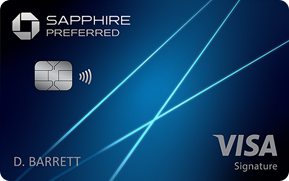In the dynamic world of financial trading, the advent of trading bots has revolutionized how individuals and institutions engage with the markets. These automated systems promise efficiency and enhanced trading strategies, but an important question for many potential users is: how much do trading bots actually cost? This article aims to provide an overview of the pricing landscape for trading bots, considering various factors that influence their cost.
Determining the Cost of a Trade Bot
The cost of a trade bot can vary significantly based on several factors. These automated trading systems come in different forms, ranging from basic bots available as downloadable software to sophisticated, algorithm-driven systems that require extensive customization. Generally, the price of a trading bot is influenced by its complexity, the features it offers, the level of customization required, and the reputation of the provider.
-
Basic Bots: These are often off-the-shelf solutions with standard features suitable for beginners or those with limited trading experience. Prices for basic bots can range from as low as free to a few hundred dollars. While affordable, they typically offer limited customization and may not have advanced features.
-
Intermediate Bots: These trading bots offer more features and customization options than basic models and are designed for traders with a moderate level of experience. They may include more sophisticated algorithms and support more complex trading strategies. The cost for intermediate bots can range from a few hundred to a few thousand dollars.
-
Advanced Bots: Targeted at professional traders and institutions, these bots are highly customizable and come with a wide array of features, including the ability to integrate with various trading platforms, access to extensive historical data, and sophisticated risk management tools. Prices for advanced bots can range from several thousand dollars to tens of thousands, depending on the level of customization and support required.
-
Subscription Services: Some trade bots are offered as part of a subscription service, where users pay a monthly or annual fee to access the bot and its features. Subscription costs can vary widely but typically range from tens to hundreds of dollars per month.
-
Custom Development: For traders with very specific needs, custom-developed bots are an option. The cost here can be quite high, often reaching tens of thousands of dollars, depending on the complexity of the bot and the developer’s expertise.
-
Additional Costs: Besides the initial purchase or subscription fee, there may be additional costs, such as fees for updates, maintenance, or access to premium features. Some bots may also require a certain amount of starting capital to begin trading, which can be a significant consideration for budgeting.
Factors Influencing Pricing
The cost of a trading bot is influenced by a myriad of factors, ranging from its basic functionality and compatibility with trading platforms to its security features and performance history. Potential buyers should evaluate these factors in conjunction with their specific trading needs and objectives to find a bot that offers the best value for their investment. It’s important to remember that the most expensive bot is not necessarily the best choice for every trader, and a careful assessment of features versus needs is essential.
-
Platform Compatibility: The compatibility of a trading bot with various trading platforms can influence its price. Bots that are designed to work seamlessly with multiple, well-known trading platforms, or those that can be easily integrated into proprietary trading systems, may command higher prices due to the added convenience and flexibility they offer.
-
Security Features: In the world of online trading, security is paramount. Bots equipped with advanced security features to protect user data and funds can be more expensive. This includes encryption, secure API connections, and measures to prevent unauthorized access.
-
Performance Track Record: A bot that has a documented history of high performance, stability, and consistent returns can be priced higher. Traders are often willing to pay a premium for bots that have been tested in various market conditions and have shown reliable profitability.
-
Regulatory Compliance: Bots designed to comply with specific regulatory requirements, especially in highly regulated markets, can be more costly. Compliance features ensure that traders adhere to legal standards, reducing the risk of regulatory violations.
-
Scalability: Bots that offer scalability, allowing traders to increase their trading volume or diversify their strategies without significant additional costs, may have a higher initial price. This scalability is particularly valuable for growing trading operations.
-
Frequency of Updates: The frequency and quality of updates provided by the bot developers can impact pricing. Regular updates that improve functionality, add new features, or adjust to changing market conditions can make a bot more valuable and expensive.
-
Community and Network: Some trading bots come with access to a community of traders, offering forums, shared strategies, and networking opportunities. Access to such communities can add value to the bot, reflected in its price.
-
Flexibility in Payment Terms: The pricing model and flexibility in payment terms can also influence the overall cost. Options like one-time payments, monthly subscriptions, or pay-as-you-go models offer different advantages and can affect the total investment in a bot.
-
Custom Reporting and Analytics: Advanced bots that provide custom reporting features, detailed analytics, and insights tailored to the trader’s specific needs may have a higher cost due to the added value they bring in terms of data analysis and performance tracking.
-
Integration with Other Financial Tools: The ability to integrate with other financial tools and services, such as portfolio management systems, tax accounting software, or risk management tools, can also increase a bot’s price. This integration adds to the convenience and efficiency of managing trading activities.
Conclusion
The cost of trading bots varies widely based on their complexity, features, and the target user base. Potential users must assess their trading needs, expertise level, and budget before choosing a bot. While more expensive bots may offer advanced features and greater customization, it is important to weigh these benefits against the cost and potential return on investment. As with any trading tool, the key is to find a balance between cost, functionality, and your specific trading strategy requirements.






